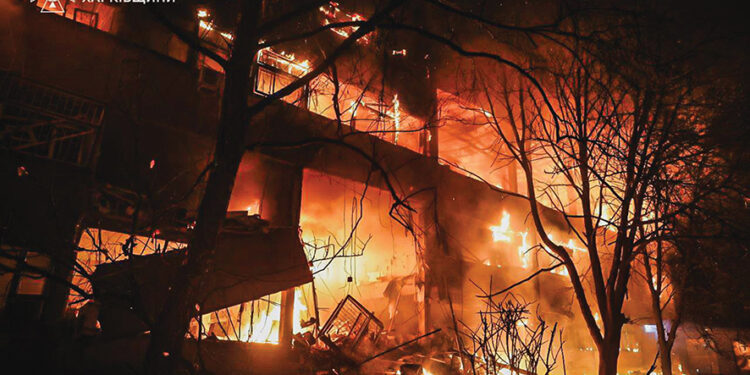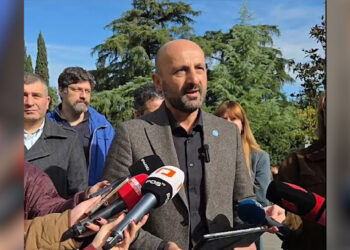Ukraine’s war-weary population was once again shaken by a deadly Russian drone attack on Thursday, June 12, as the city of Kharkiv endured one of the most concentrated nighttime assaults in recent months. Six people were killed and 64 injured, including nine children, in the nine-minute barrage that struck Ukraine’s second-largest city, say Ukrainian officials. This latest attack comes as the conflict continues to escalate across both combat zones and international political arenas. Ukrainian military forces responded by striking a major Russian gunpowder plant in Russia’s western Tambov region overnight, igniting a fire at the facility. While the strategic value of the strike remains unconfirmed, it marks a bold extension of Kyiv’s efforts to undermine Russia’s military-industrial infrastructure beyond the frontlines.
On the ground, Russian mechanized infantry units—bolstered by a tank division—have reached the western edge of Donetsk and are now pushing into Ukraine’s Dnipropetrovsk region, says Russia’s Ministry of Defense. This expansion of the eastern front signals a potential new offensive effort aimed at penetrating deeper into Ukrainian-held territory.
Meanwhile, Moscow’s Defense Ministry reported the destruction of 32 Ukrainian drones overnight, with half intercepted over Voronezh and others shot down in Kursk, Tambov, Rostov, and Crimea. These frequent drone exchanges are a testament to the increasingly technological and remote nature of the war, even as intense infantry combat rages on the ground.
In a somber moment, Ukraine announced the return of the bodies of 1,212 fallen soldiers. The Kremlin said 27 Russian soldiers’ bodies were returned in exchange.
In a move widely seen as symbolic posturing after Ukraine’s daring June 1 strike on Russian airbases in Siberia, Moscow sent long-range Tu-22M3 bomber planes on a mission over the Baltic Sea. Deputy Foreign Minister Sergei Ryabkov downplayed the impact of Ukraine’s recent attacks, insisting that Russia’s nuclear forces remain robust and nearly fully modernized. President Vladimir Putin echoed this on state television, claiming that 95 percent of Russia’s strategic nuclear arsenal is up to date.
International reactions to recent events have ranged from cautious support to veiled criticism. US Ambassador to NATO Matthew Whitaker called Ukraine’s drone strike on Russian airbases “badass” but admitted it was “a little bit reckless, and a little bit dangerous,” reflecting growing Western unease about escalation.
Ukrainian President Volodymyr Zelensky, speaking at a regional summit in Odesa, warned that Russia intends to destroy southern Ukraine and poses a growing threat to Moldova and Romania. He called on neighboring countries to apply increased diplomatic and economic pressure on Moscow.
Notably, Serbian President Aleksandar Vucic—a longtime ally of the Kremlin—attended the summit, marking his first visit to Ukraine in over a decade of leadership. The diplomatic move signals a possible shift in Serbia’s approach to the war.
Elsewhere, Finland summoned a Russian diplomat following another suspected airspace violation on June 10—the second such breach in under three weeks—highlighting growing security concerns among NATO’s eastern members.
Economic disentanglement from Russia continues across Europe. Germany reported a staggering 95 percent drop in Russian imports between 2021 and 2024, while exports fell by 72 percent. The European Union overall saw imports fall by 78 percent and exports by 65 percent, leading to a dramatic decrease in trade volume with Russia—from a €147.5 billion surplus in 2022 to a €4.5 billion deficit in 2024, reported the German statistics office, Destatis.
Still, not all EU members are aligned on the sanctions policy. Slovakia’s Prime Minister Robert Fico warned that his government will oppose the EU’s 18th sanctions package unless the European Commission provides solutions to offset the impact of phasing out Russian energy.
Compiled by Ana Dumbadze














